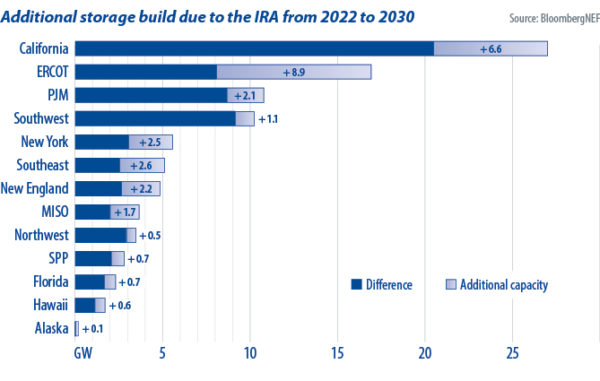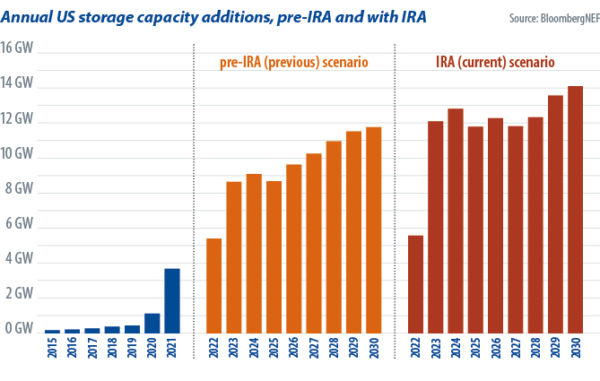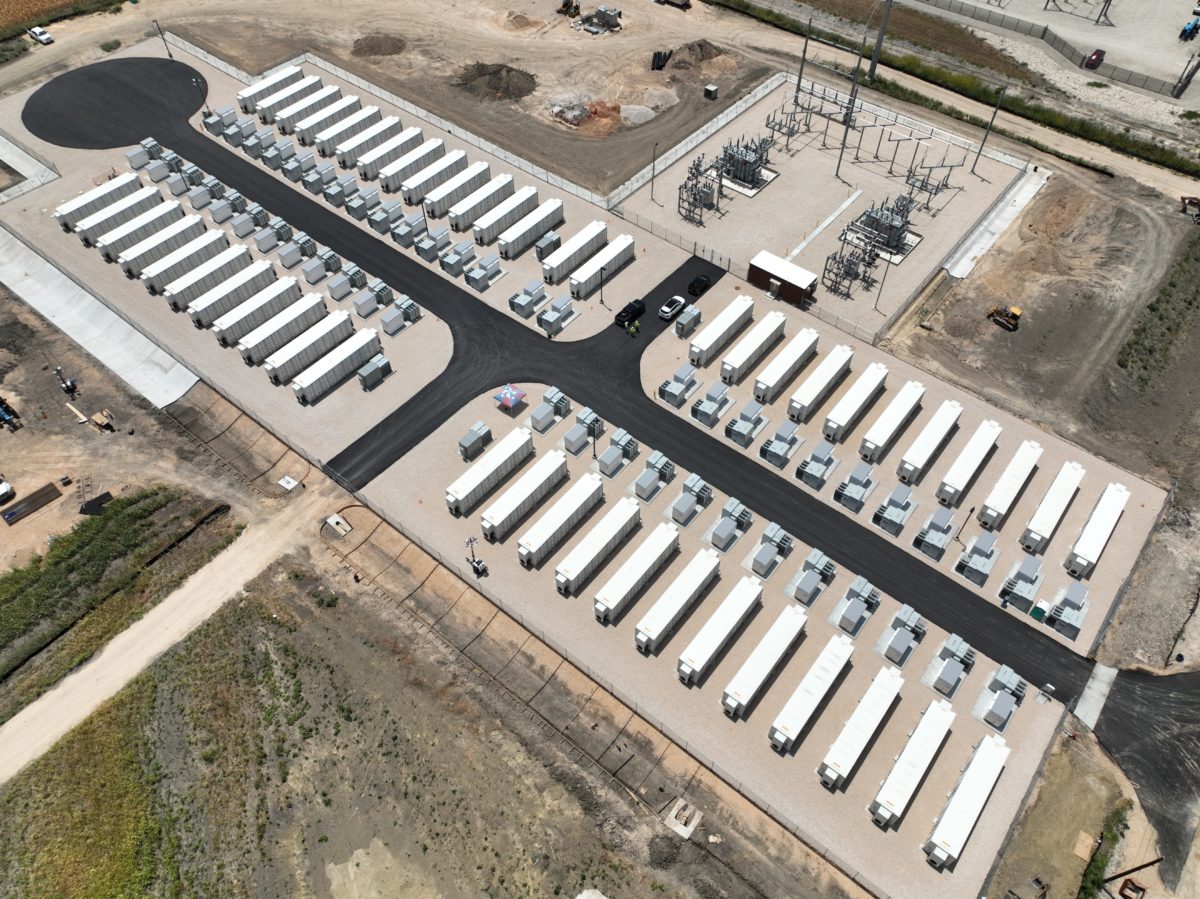With the divisions present in U.S. politics, people were caught off guard in August 2022 when the largest piece of climate legislation in the nation’s history was signed into law by President Joe Biden. A culmination of the thwarted Build Back Better Act, which floundered thanks to opposition from the Democrat duo of Senator Joe Manchin, of West Virginia, and senate majority leader Chuck Schumer, of New York, the IRA proposes a $369 billion injection into the U.S. clean energy economy.
For the second time in the country’s clean power history – the first being the Obama administration’s extension of the solar investment tax credit (ITC) and wind production tax credit – the distributed generation market has a sense of permanence that has instilled hope and a long-term investment horizon.
“The sense was that energy storage is the industry that is going to finally take off this year,” says Andrew Tang, VP of energy storage and optimization for Finnish energy technology company Wärtsilä Energy. Voicing a common refrain, Tang adds, “Previously, the storage space was seen as the red-headed stepchild, next to the automotive EV [electric vehicle] space.” For much of the prior decade in the US, energy storage seemed to always lose out, whether for federal subsidy, investment, or a steady battery supply.
With 80% of batteries going into electric vehicles, it’s still hard to see how stationary energy storage development might escape its troubled past, but commercial and utility scale development is at a turning point. On top of the 30% standalone storage ITC, the IRA offers tax credit “adders” for projects in low-to-moderate income communities, including on tribal land, for projects featuring American components and labor, and for batteries installed into repurposed fossil fuel power plants.
Developers tell pv magazine USA if a Tribal authority deploys an American-assembled storage project in a microgrid, the total cost savings can reach 60% to 70%. That incentive is shared by developer, off-take counter party, investors, and battery and parts distributors.
Energy community adder
The IRA’s energy community clause, offering a 10% ITC adder, provides a mechanism for deploying batteries at shuttered fossil fuel facilities, which require none of the additional costs of electricity transmission system upgrades that greenfield projects do. The clause gives the Department of Energy authority to extend $5 billion in credit subsidies to support $250 billion of loans to battery energy storage projects that “retool, repower, repurpose, or replace energy infrastructure,” such as decommissioned coal-fired power plants.

“All over the US there’s fossil fuel power plants near urban centers which have important capacity needs right now, to ensure the lights stay on,” says Jeff Bishop, CEO of Key Capture Energy, a grid-scale storage developer in Texas and New York. “I’m excited to read ESG [environmental, social, and corporate governance] reports of rapid coal retirements in the MISO region,” Bishop said of the large Midcontinent System Operator grid, which stretches from upper Minnesota to the Mississippi Delta of Louisiana.
After the Electric Reliability Council of Texas grid – which analyst Helen Kou of BloombergNEF expects to install 8.9 GW/35.6 GWh of storage through 2030 – the MISO grid is not far behind, with 1.7 GW/6.8 GWh anticipated. Historic coal areas such as the MISO and PJM Interconnection regions are forecast to install 1.7 GW and 2.1 GW/8.4 GWh, respectively, of storage capacity.
Key Capture has a joint venture agreement with independent power producer Talen Energy for a 20 MW battery at Talen’s 600 MW HA Wagner coal plant, in Baltimore. While Bishop is quick to admit the developer “starts small for projects,” the coal plant presents an expansion opportunity for Key Capture to deploy more batteries at the site, and the developer will be eligible for IRA energy community incentives.
Outside lucrative storage markets in California, Texas, and New York, Bishop says fossil fuel repurposing in markets such as MISO and PJM represent a great opportunity for developers under the IRA package.
Environmental justice adder
Low-to-moderate income (LMI) communities, Native-American tribal authorities, and other disadvantaged groups may be eligible for a 10% ITC adder under an innovative aspect of the IRA. Some $7 billion worth of grants can be awarded from the Greenhouse Gas Reduction Fund for facilities such as solar-plus-storage projects of 5 MW or less on recognized tribal land.
Matt Harper, co-founder and chief commercial officer of UK-based vanadium redox battery supplier Invinity Energy Systems, says Tribal authorities can recover 50% to 70% of costs in some cases, with the storage ITC of 30% plus 10% adders for domestic battery content and labor, and the environmental justice adder. Hugh McDermott, senior VP for sales & business development at saltwater brine flow battery distributor ESS Inc, agreed with that estimate.
In November 2022, Invinity Energy and zinc-ion battery supplier Eos Energy Enterprises were selected to provide 3.75 MW/15 MWh and 8.75 MW/35 MWh, respectively, of battery systems for a solar-plus-storage microgrid developed by Indian Energy LLC, an energy company of the Viejas Tribe of Kumeyaay Native Americans from Southern California.
Indian Energy topped its IRA incentives with a $31 million grant from the California Energy Commission, to develop long-duration storage in its microgrid portfolio, which includes a 3.75 MW/15 MWh solar array. The tribal business is deploying two near-term microgrids, at the Viejas Casino & Resort, east of San Diego, and a nearby naval base. Indian Energy’s project development pipeline includes 4 GW of solar and wind projects, and 6 GWh of energy storage.
Non-wire alternatives
Rob Ritchie, director for energy storage at renewables developer Nexamp, stresses large projects aren’t always necessary to unlock resiliency and smoothly integrate intermittent renewables in the grid. Often the best use cases for distributed generation resources, such as community solar-plus-storage, will remedy exhausted sub-zones of the grid in rural locations, without wires.
Electric company National Grid turned to Nexamp after a 2019 tender document revealed the utility’s western New York service territory had overloaded transmission and distribution infrastructure such that, without a power sub-station upgrade, blackouts could occur.
Nexamp’s Watertown, New York DG project provides up to 5.7 MW/29 MWh up to 25 times per year for National Grid, by combining an 8.4 MW community solar array with 10 Tesla Megapack batteries with a total 31 MWh of storage. Additional capacity from the solar system was procured for use under a local community solar subscription program.
Nexamp’s Ritchie told pv magazine USA that additional LMI solar-plus-storage projects in Hawaii, and other states with active community solar programs, may also qualify for the solar ITC, storage ITC, and adders. The company is working with utility Hawaiian Electric to install seven community solar-plus-storage projects on the islands of Hawaii (12.8 MWdc/41.1 MWh storage), Maui, (11.2 MWdc/35.5 MWh) and Oahu (7.8 MWdc of solar).
Ritchie says that portfolio also enables a “black start” function which, during an outage, can step in to help restore service without having to wait for traditional transmission and distribution system operators.
Solar-plus-storage
Sara Kayal, global head of PV integrated solutions at clean energy developer Lightsource bp, says that 2020 was the second phase in the maturation of the U.S. solar-plus-storage market. After pilot projects started to appear in 2016, Kayal agrees the IRA’s storage credit and the solar ITC will drastically increase the number of solar-plus-storage facilities from half of the current PV mix.
While 50 MWh would have been seen as a big storage component until now, Kayal reckons 100 MWh and larger will be the new norm as solar capacities rise to typically top 450 MW. Lightsource bp wants half of its 2025 development pipeline – 12.5 GW – to feature lithium-ion batteries, though Kayal said the developer could pilot long-duration storage such as sodium-ion, hydrogen-nickel, or vanadium redox systems.
Amid supply chain constraints and EV thirst for batteries, Justin Johnson, chief operating officer of renewables company Arevon Energy, says his business continues to see rising battery costs of 30% to 40%. Arevon uses U.S.-made solar modules from companies including First Solar, and batteries from Tesla, Powin Energy, and Fluence Energy, Johnson says. He expects to source products from U.S. battery gigafactories from around 2025, thanks to IRA production incentives keeping prices down.

Matt Walz, VP for business development at Invinity, said his company’s vanadium redox batteries qualify for production credits worth $45 per kilowatt-hour of capacity. Other cell components and electrolytes are eligible for a 10% credit and Invinity’s U.S.-sourced vanadium brings another 10%.
Growth forecasts
For storage projects, offering more than four-hour discharge, new markets and utility off-takers include the Orlando Utilities Commission in Florida, NV Energy in Nevada, Georgia Power, and Minnesota’s Great River Energy, according to Julia Souder, executive director of non-profit the Long Duration Energy Storage Council. Corporates including Google, Microsoft, and Compass Datacenters are also deploying non lithium-ion storage, she adds.
Wood Mackenzie grid-storage analyst Vanessa Witte recently forecast 65 GW of energy storage projects will be necessary through 2026 to meet U.S .federal and state net zero goals in the next two decades. Bloomberg NEF’s Helen Kou says 54 GW of IRA-driven storage will lift the U.S. to 112 GW/396 GWh this decade.
Four-hour energy storage systems cost around $589 per kilowatt-hour of capacity in 2019 and federal body the National Renewable Energy Laboratory (NREL) pegged a four-hour, 60 MW/240 MWh lithium-ion battery at $369/kWh two years ago. NREL expects costs of $143/kW to $248/kW in 2030.
Kou says four-hour storage systems cost around $256/kWh in 2021, $324/kWh last year, and will stay higher again this year thanks to supply constraints. She and Witte agree the biggest volume of new storage will arrive in 2024-26.
BloombergNEF expects a 41% rise in storage projects next year, to 12.8 GW/42.8 GWh, and a 27% annual rise in 2026, to 12.3 GW/47.3 GWh. After that, double digit increases are expected to continue, to hit 14.1 GW/54 GWh in 2030.
This content is protected by copyright and may not be reused. If you want to cooperate with us and would like to reuse some of our content, please contact: editors@pv-magazine.com.









By submitting this form you agree to pv magazine using your data for the purposes of publishing your comment.
Your personal data will only be disclosed or otherwise transmitted to third parties for the purposes of spam filtering or if this is necessary for technical maintenance of the website. Any other transfer to third parties will not take place unless this is justified on the basis of applicable data protection regulations or if pv magazine is legally obliged to do so.
You may revoke this consent at any time with effect for the future, in which case your personal data will be deleted immediately. Otherwise, your data will be deleted if pv magazine has processed your request or the purpose of data storage is fulfilled.
Further information on data privacy can be found in our Data Protection Policy.